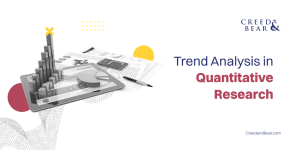The Data wars have officially begun, and in this era of everyday AI and machine learning algorithms, the battle for supremacy lies in who possesses the most data. But what does this mean for you and your security? In this article, we will delve into the realm of edge computing, a technology that is gaining traction in the mainstream. We will explore the reliability aspects and compare them with traditional cloud storage. Additionally, we’ll uncover the practical use cases of edge computing, particularly in home automation and the rise of smart homes. Join us as we navigate the landscape of edge computing and its potential to revolutionize security and privacy in the digital age.
What is Edge Computing
At its core, edge computing is a distributed computing paradigm that brings computation and data storage closer to the source of data generation, reducing latency and enabling real-time data processing. Unlike traditional cloud computing, which relies on remote data centers, edge computing takes place on local devices or edge servers. This approach offers several advantages, including faster response times, improved data privacy, and reduced dependence on a centralized infrastructure.
Implementing Edge Computing in Your Home
Home automation is a use case for edge computing. With the advent of technologies like Raspberry Pi and Coral boards, homeowners can now set up their edge computing systems easily and cost-effectively. These compact yet powerful devices, combined with the capabilities of AWS systems, enable local data processing and analysis right at the edge of the network. From monitoring security cameras and smart appliances to managing energy consumption and optimizing routines, edge computing empowers homeowners to take control of their data and privacy. Machine learning will now see its way into every household.
Protecting Your Privacy with Edge Computing in Smart Home Devices
Imagine you have a smart security camera installed at your front door. With edge computing, the camera has the ability to instantly recognize and analyze any movement or unusual activity happening right on your doorstep. It does all this without relying on an internet connection or sending data to a cloud server for processing. This means you get faster detection and response times, as well as better protection for your privacy and security. Since the camera processes everything locally, it keeps your sensitive data safe within the boundaries of your own home, making it much more difficult for hackers to access or manipulate that information.
Edge Computing vs. Cloud Storage
While cloud storage has been widely adopted, it has its limitations. One of the main concerns is latency, as data needs to travel back and forth between devices and remote data centers. This delay can be critical in applications that require real-time responses. Edge computing overcomes this challenge by processing data locally, reducing latency, and improving responsiveness. Moreover, edge computing offers enhanced data privacy since sensitive information remains within the local network, reducing the risk of unauthorized access or data breaches.
Future-Proofing Data Storage Creed&Bear Explores the Synergy of Edge Computing and Cloud Storage
Edge computing and cloud storage have emerged as two prominent solutions with distinct advantages. At Creed&Bear, we constantly explore innovative technologies to stay at the forefront of the industry and ensure our clients’ best interests are met. Edge computing offers the potential for localized data processing, enabling faster response times and reduced latency by bringing computation closer to the data source. On the other hand, cloud storage provides scalability, flexibility, and centralized data management. As we navigate the complexities of data storage, we carefully evaluate the benefits and considerations of each approach to determine the most suitable solution for our client’s unique needs. By staying informed and adaptable, we can provide tailored data storage solutions that align with the changing technological landscape.
Edge computing represents a significant advancement in the field of data processing. By bringing computation closer to the source of data generation, organizations can benefit from real-time insights and enhanced user experiences. The evolution of edge devices, network infrastructure, and on-premises systems has made edge computing more accessible and powerful. It opens up new possibilities for innovation across various industries, such as autonomous vehicles, smart city projects, and digital asset management. At Creed&Bear, we recognize the potential of edge computing and its ability to drive efficiency and performance. Our continuous R&D will always explore the latest developments to bring the best products and services to market.
AI Usage: This article was initially drafted with the assistance of artificial intelligence and subsequently edited to ensure originality and avoid plagiarism. However, in the event that the content inadvertently resembles other works, we do not assume responsibility for any unintentional overlaps or similarities. We invite readers to notify us of any such resemblances so that we can make the necessary modifications in respect and consideration of other authors and brands.
Finance and Trading: The insights and opinions expressed in this blog post concerning trading and market are solely those of the author and should not be interpreted as financial advice. This content is for informational purposes only and does not constitute recommendations or endorsements for any specific investments, securities, or financial strategies. Readers should conduct their own research or consult with a financial professional before making any investment decisions.





